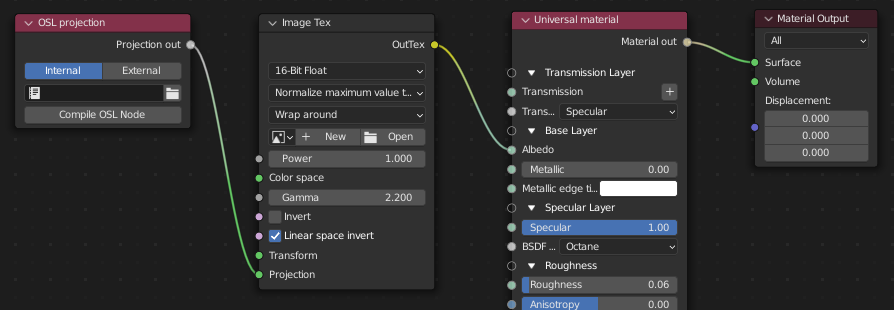
The OSL projection node is a scriptable node that lets you write OSL (Open Shader LanguageA shading language developed by Sony Pictures Imageworks. There are multiple render engines that utilize OSL as it is particularly suited for physically-based renderers.) scripts to define arbitrary Projection types. It's similar to an OSL texture, but it connects to a Projection input. OSL is a standard created by Sony Imageworks. To learn about the generic OSL standard, read the OSL Readme and PDF documentation.

Figure 1: The OSL projection node
There are two options to add scripts for OSL projections. The Internal option lets you open another area in Blender® for the Text Editor and create a new text file for the OSL script. The External option lets you to select a pre-coded OSL file from the File Explorer window.
The initial script’s declaration component includes one required output variable with Output Typepoint. The OSL I/O Type point corresponds to an OctaneRender® Projection attribute node (Box, Mesh, UV, Spherical, Cylindrical, etc.).
Shader OslProjection (
output point uvw = 0)
{
uvw = point(u, v, 0);
}
A projection shader must have one output of a point-like type. All global variables have the same meaning as within texture shaders. The output value specifies a texture coordinate.
For a list of OSL variable declaration I/O Types in the OSL Specification that OctaneRender® supports, refer to the Appendix topic on OSL Implementation in the OctaneRender® Standalone manual. To learn more about scripting within OctaneRender® using the Open Shader Language, refer to The Octane OSL Guide.